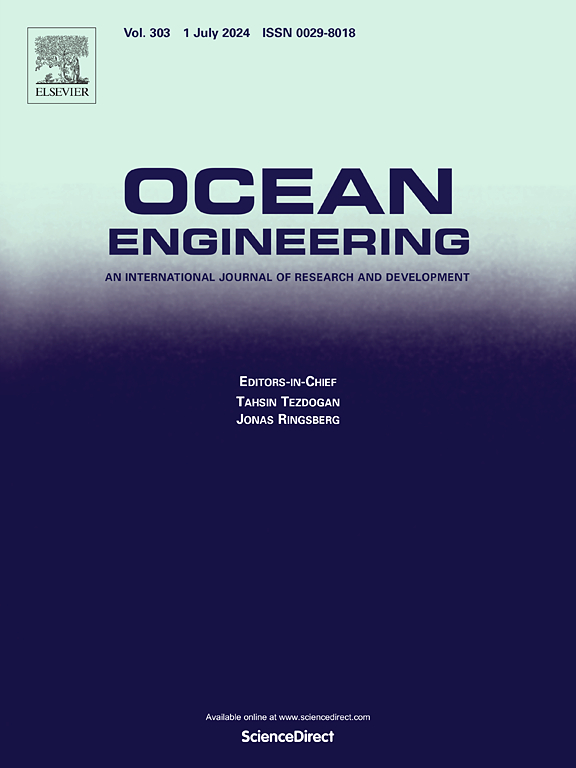Tuning body shape and stiffness to reduce water slamming forces
IF 5.5
2区 工程技术
Q1 ENGINEERING, CIVIL
引用次数: 0
Abstract
This paper reveals how plunge-diving seabirds control impact energy during high-velocity water entry to hunt fish in deep waters without breaking their necks. Previous research has shown that the aerodynamic shape of the head or the structural compliance in the neck can reduce slamming forces. However, the physics governing their combined effects combined on the dive performance are is not well understood. The paper addresses this gap by demonstrating analytically and experimentally why the combined effect of shape and compliance is key for controlling the energy transmission during impact, passively. The impact forces at varying velocities are measured experimentally using a simple projectile design— to emulate seabirds’ dives —with different head shapes (cone angles) and spring stiffnesses (compliance). The experiments are utilized to develop a semi-analytical model to estimate the amount and duration of the stored, released, and dissipated energy. Our findings show that the slamming forces can be passively reduced by tuning the compliance to increase the amount of impact energy stored in the system and delay its release and dissipation. While decreasing the cone angle reduces the slamming forces for a rigid system, the effect of compliance on reducing these forces is more pronounced in projectiles with half-cone angles larger than 30°. Modeling the interplay between cone angle and neck compliance offers physical insights into how diving seabirds mitigate mechanical stresses during impacts, thereby avoiding catastrophic damage. Conversely, these insights can be exploited to engineer mechanical systems with passive control of dynamic loads such as impact, shock, or vibrations with minimal energy losses.
调整身体形状和刚度,以减少水撞击力
本文揭示了潜水海鸟在高速入水过程中如何控制冲击能量,在不折断脖子的情况下在深水中捕食鱼类。先前的研究表明,头部的空气动力学形状或颈部的结构顺应性可以减少撞击力。然而,控制它们对潜水性能的综合影响的物理原理还不是很清楚。本文通过分析和实验证明了为什么形状和柔度的综合效应是被动控制碰撞过程中能量传输的关键,从而解决了这一空白。不同速度下的冲击力是用一种简单的弹丸设计——模拟海鸟的俯冲——用不同的头部形状(锥角)和弹簧刚度(顺应性)进行实验测量的。利用实验建立了半解析模型来估计储存、释放和耗散能量的数量和持续时间。研究结果表明,可以通过调整柔度来增加系统中存储的冲击能量,并延迟其释放和消散,从而被动地减小撞击力。对于刚性系统来说,减小锥角可以减小撞击力,而对于半锥角大于30°的弹丸,柔度对撞击力的减小作用更为明显。通过模拟锥角和颈柔度之间的相互作用,可以深入了解潜水海鸟在撞击过程中如何减轻机械应力,从而避免灾难性损伤。相反,这些见解可以用于设计机械系统,以最小的能量损失被动控制动态负载,如冲击、冲击或振动。
本文章由计算机程序翻译,如有差异,请以英文原文为准。
求助全文
约1分钟内获得全文
求助全文
来源期刊

Ocean Engineering
工程技术-工程:大洋
CiteScore
7.30
自引率
34.00%
发文量
2379
审稿时长
8.1 months
期刊介绍:
Ocean Engineering provides a medium for the publication of original research and development work in the field of ocean engineering. Ocean Engineering seeks papers in the following topics.
 求助内容:
求助内容: 应助结果提醒方式:
应助结果提醒方式:


